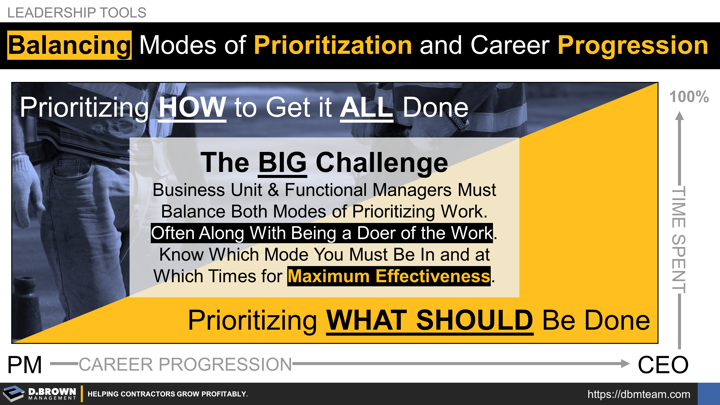We all must prioritize in life and at work. Our outcomes are heavily impacted by how effective we are at prioritization. This impact grows exponentially as we progress to broader leadership roles, including being parents.
Prioritization comes in three major modes. To achieve maximum effectiveness, it is very important to understand which mode we should be in and at what time. These three modes are:
- Prioritizing how to get your individual work done.
- Prioritizing how to get everything done with a team.
- Prioritizing what should get done to provide the best return on resources. Equally important is prioritizing what should not be done at all.
Often, an unbiased third-party perspective can help us see priorities differently. Who do you go to? Who do others on your team go to? How often? Do you approach prioritization sessions with the same rigor as an intense workout?
“We spend a lot of time teaching leaders what to do. We don’t spend enough time teaching leaders what to stop. Half the leaders I have met don’t need to learn what to do. They need to learn what to stop.” - Peter Drucker

